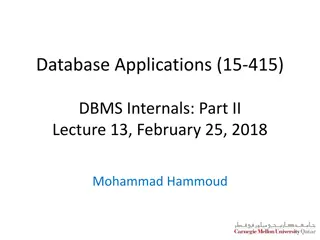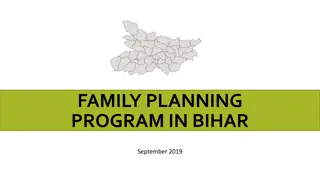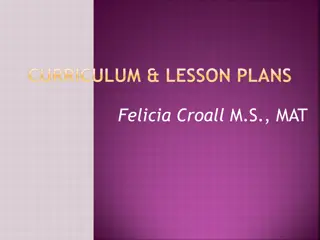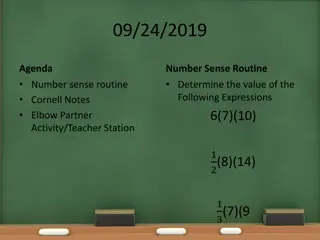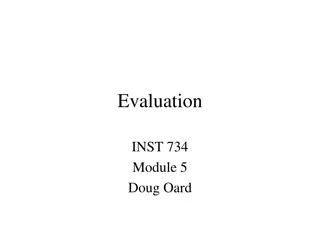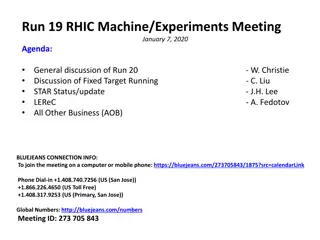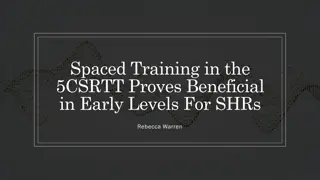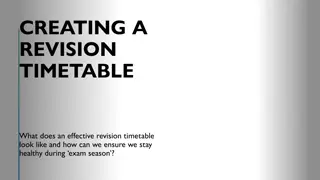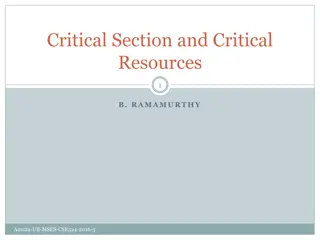
Enhancing Learning Through Interleaved Study Methods
Interleaved learning involves mixing multiple subjects or topics while studying to enhance memory retention and learning efficiency. This technique breaks down block learning and boosts knowledge recall. Examples from English, Maths, and History demonstrate how interleaved learning is utilized in educational settings.
Download Presentation

Please find below an Image/Link to download the presentation.
The content on the website is provided AS IS for your information and personal use only. It may not be sold, licensed, or shared on other websites without obtaining consent from the author. If you encounter any issues during the download, it is possible that the publisher has removed the file from their server.
You are allowed to download the files provided on this website for personal or commercial use, subject to the condition that they are used lawfully. All files are the property of their respective owners.
The content on the website is provided AS IS for your information and personal use only. It may not be sold, licensed, or shared on other websites without obtaining consent from the author.
E N D
Presentation Transcript
Ready to Revise: Ready to Revise: Interleaved Learning Interleaved Learning Are you familiar with this term already? Define this in pairs Can anyone think of an example from a subject you study where interleaved learning has been used?
Ready to Revise: Ready to Revise: Interleaved Learning Interleaved Learning What is the definition of this? Interleaving is a process where students mix, or interleave, multiple subjects or topics while they study in order to improve their learning. When planning a revision timetable, students should be conscious of mixing subjects and topics up so that they are covering a breadth of study. It is tempting to just cover those subjects we love in blocks, but this will not make us successful across the board. On average you can hold 7 items in your working memory at a time. It is forgotten in seconds or minutes.
Ready to Revise: Ready to Revise: Interleaved Learning Interleaved Learning Linked back to memory This shows us the merits of interleaved learning: It s no good block learning in chunks, the way forward is to break this down and keep some variety. This way you are much more likely to cover a breadth of subjects. Psychologist, Hermann Ebbinghaus found that repeating information helps us remember more of it.
Ready to Revise: Ready to Revise: Interleaved Learning Interleaved Learning An example from English The English Department plans the series of lessons so that you are always covering two topics. At the moment you are studying A Christmas Carol alongside the poetry. In Y11, you study Language alongside Literature. This means interleaved learning is at the heart of everything we do Psychologist, Hermann Ebbinghaus found that repeating information helps us remember more of it.
Ready to Revise: Ready to Revise: Interleaved Learning Interleaved Learning An example from Maths Maths frequently use revision grid starters to recap key work. They regularly use these with all year groups, most lessons with KS4. Some of the content of these is often informed by recent assessments, so teachers can target gaps in knowledge. In addition, homework is almost always consolidate work. Psychologist, Hermann Ebbinghaus found that repeating information helps us remember more of it.
Ready to Revise: Ready to Revise: Interleaved Learning Interleaved Learning An example from History History: One of the key interleaving techniques we use a 'Quick Quiz'. These can be exclusively on a previous topic at the start of a lesson or as part of a quiz on the topic being studied. We think it is essential that we portion up the topics and keep returning to these so that the working memory is extended . Psychologist, Hermann Ebbinghaus found that repeating information helps us remember more of it.
Ready to Revise: Ready to Revise: Interleaved Learning Interleaved Learning Over to you Imagine you were tasked to map out your revision for the subjects in the columns on the right. Block A might be a lunchtime or straight after school and Block B each day might be when you get home or later in the evening. How would you map this out? Discuss in pairs: English Geography Monday Tuesday Wednesday Thursday Friday Chemistry Block A Block B Maths Food Tech Psychologist, Hermann Ebbinghaus found that repeating information helps us remember more of it.
Ready to Revise: Ready to Revise: Interleaved Learning Interleaved Learning Over to you English Did it look like this? Geography Monday Tuesday Wednesday Thursday Friday Chemistry Block A Geog Maths Chem Food Tech English Block B Food Tech English Geog Maths Chem Maths Remember, with revision it s also important to take breaks, to eat well, to ensure you re getting enough sleep and to minimise distractions by moving your phones away from you! Food Tech Psychologist, Hermann Ebbinghaus found that repeating information helps us remember more of it.
Ready to Revise: Ready to Revise: How do we learn? Memory, retention, and recall. How do we learn? Memory, retention, and recall. Copy this into the notes page (28) of your planner: Title: How do we learn? 1. Interleaved learning is the process in which we mix subjects and topics in a revision schedule 2. Mapping out a revision timetable to cover a breadth of topics is essential 3. Interleaved learning is key to long-term memory



